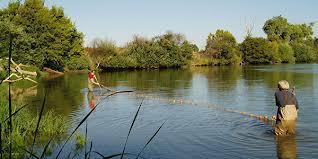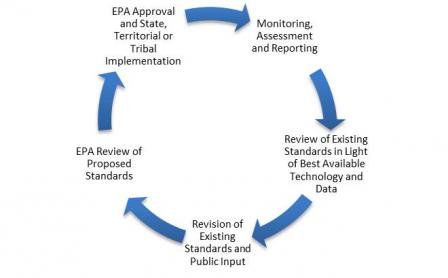How are Water Quality Standards Developed?

Each state, territory and authorized tribe has its own legal and administrative procedures for adopting water quality standards. In general, standards are developed using a work group process or informal public meetings and are eventually proposed for public comment.
States, territories and authorized tribes then begin a public participation process that includes public hearings regarding the proposed standards. The proposed water quality standards and supporting information are made available to the public prior to the hearing.
States, territories and authorized tribes must adopt water quality criteria with sufficient coverage and of adequate stringency to protect designated uses. In adopting criteria to protect the designated use, states, territories and authorized tribes may:
- adopt the EPA recommended criteria;
- adopt unique criteria to reflect site specific conditions; or
- use other scientifically-defensible methods to develop their own criteria.
The process used by the state, territory or authorized tribes to propose water quality standards may look similar to the steps described by the diagram below:

Each state, territory or authorized tribe must include the following key elements in their water quality standards to meet EPA approval:
- Designated uses that are consistent with the Clean Water Act.
- Criteria sufficient to protect designated uses.
- Antidegradation requirements.
- General policies affecting the application and implementation of the standards.
In addition, the state, territory or authorized tribe must provide the methods and analyses that were used to develop the standards.
Federal Review Process
EPA must review and approve or disapprove each submission from a state, territorial, or authorized tribe. Proposed water quality standards must be approved by EPA before they can be used as the basis for actions under the Clean Water Act, such as establishing water quality-based effluent limitations or total maximum daily loads (TMDLs). In certain situations, EPA also consults with tribal governments as well as other federal agencies under the Endangered Species Act.

If EPA determines that the submission meets the CWA requirements, and then the standards become applicable. The state, territory or authorized tribe is required to periodically review its approach to water quality protection at least once every three years.

EPA may decide that part or all of a state, territory or authorized tribe’s water quality standards do not meet the requirements of the Clean Water Act. In this case, EPA will specify changes that would make the standards approvable. The state, territory or authorized tribe must revise their standards, or EPA may promulgate federal standards if necessary.
The Water Quality Standards Program operates under Section 303 of the Federal Water Pollution Control Act (Clean Water Act), 1972 (33 U.S.C. 1313(c)). The current regulations (40 CFR 131) implementing this section of the CWA were published on November 8, 1983 (48 FR 51400).
To learn more about water quality standards development browse the Water Quality Standards Academy webpage. The Water Quality Standards Academy presents classroom and online courses using learning modules for all levels.
